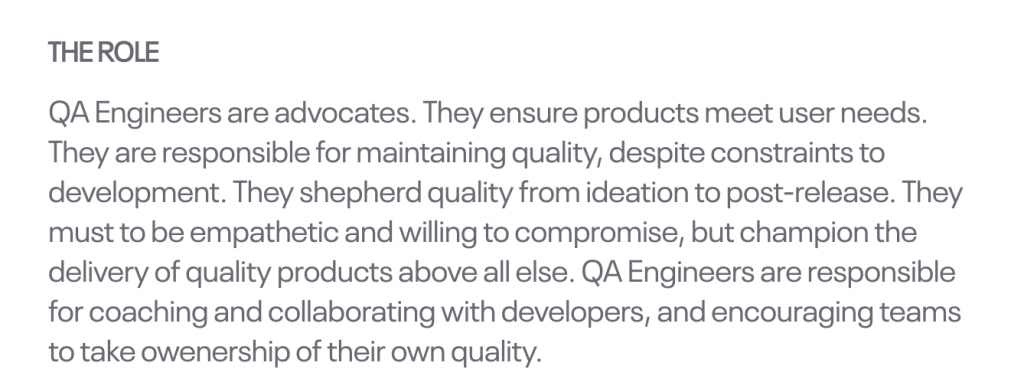Businesses often maintain documentation as part of their product. You might be thinking of help center articles, hover text, and little anthropomorphic paper clips. But, the end user is not the only one who benefits from guidance around a product’s intended use. Customer-facing teams, like sales and customer support, also need thorough product communications.
Enabling customer-facing teams to support and sell your offerings is part of delivering a high-quality product. Development teams should be cognizant of the needs of customer-facing teams in the same way that they are the needs of their end user. In this post, I share 8 tips for communicating with customer-facing teams.
1. Real-time isn’t always best
Engineers being available for questions from customer-facing teams is a well-intentioned practice. Generally, this practice is healthy for the organization too. Yet, communication channels that enable this real-time support come with pitfalls.
If your company operates in several offices or timezones communicating in real-time may be difficult. Remote employees commonly receiving subpar communications.
It is hard for development teams to track work they are doing supporting customer-facing teams in real-time too. Not being able to track this work can make planning difficult.
Real-time communications are rarely indexed or searchable. This means you will need to do a bit of digging when you want to reference old information later. Anyone not involved in the original correspondence will struggle to find that information. You are unlikely to get any answers from an email you don’t know about, or one in someone else’s inbox!
Because of their different responsibilities, engineers and customer-facing teams also have a different context. It is often hard to know what someone else knows. It is difficult to know what information would help someone without a sense for what challenges they face.
Real-time channels are still a valuable part of communicating with customer-facing teams. Pairing real-time conversation with written documentation and maintaining FAQs is a nice mix!
2. You need to translate some communications
If your team works in more than one language, translating communications is critical. Beyond that, these communications should always leverage language that promotes shared understanding.
Reusing documentation for many stakeholders is practical. Keep in mind that customer-facing teams may not be familiar with the same jargon. Those teams also have different areas of concern. Documentation that a development team prepares for product and engineering is unlikely to be as helpful for the sales team.
Write documentation in a way that serves more than one stakeholder. If that doesn’t make sense, create more than one document. Preparing communications explicitly for customer-facing teams enables them to support your user better. This is more work up front. Yet, in the long run, this may even reduce the time and cost of cross-functional communication.
3. Good content is useless if nobody can find it
Teams should use a mix of documentation and communication strategies. For coworkers who are working with a live user, searchable information is critical. Utilizing existing searchable tools for communication is great, but devs can think bigger! Consider building tooling that aggregates and indexes internal comms. Painstakingly crafted documentation has little value without good visibility.
4. The Agile Manifesto doesn’t suggest you stop writing documentation
“Working software over comprehensive documentation” is one of the core values of Agile. Some believe it prescribes prioritizing development work at the cost of documentation. This is a misinterpretation. Teams should create documentation that adds value and doesn’t hinder progress. The Agile value actually supports thinking of communication as a product! Instead of “comprehensive documentation”, try considering communication as part of building “working software.”
5. Demos, demos, demos
Eventbrite surveyed our customer-facing employees, and this tip comes straight from the data. Recorded demos are a valuable part of our communication strategy. The issue at Eventbrite wasn’t creating demos, but making sure we distribute them. We mostly shared our demos with product and engineering. We now know that those same demos can help empower our customer-facing teams. When you create informative content, think beyond the obvious stakeholders.
I also want to call out that you should record demos whenever possible. Live demos are valuable, but recording and distributing them can broaden their visibility. This is critical to serving customer-facing teams in other timezones and locals.
6. Slide out of the DMs
This tip is one of my favorites because you can apply it at a personal level without having to get your team on board. Discuss your product’s functionality or expected behavior public channels. This is especially valuable for teams that use tools that make conversations searchable. Set clear expectations for what information is not ready for your customer. Then, have non-sensitive conversations where customer-facing can access them.
7. Consider the impact on peer support channels
Customer-facing teams are resourceful. These teams create spaces to ask their peers for help. These channels are very useful when trying to improve visibility for your communication. These forums are also a perfect place to learn what questions need answering. I recommend checking-in from time to time! Use these channels to help build out FAQs.
8. Audit your processes
I would be remiss to not also share a more general tip for healthy business communication. Approach conversations with empathy and try to understand the other party’s perspective. Discuss and measure the success of your communications. Ask customer-facing folks what is working for them and where they need more support. Keep looking for opportunities to improve your communications as you do your product. Consider adding a mechanism for soliciting, recording, and leveraging feedback.
Now What?
Good cross-functional communication is often an amalgam of communication channels and strategies. The communication improvement initiative with the greatest impact will vary between organizations. What strategies have worked best for you when sharing information with customer-facing teams? Please add a comment with your insight, or reach out to me on Twitter to continue the conversation!




